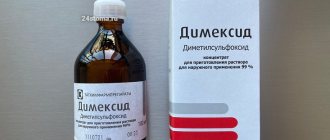A lot has been written about the importance of the hearing organ for humans. Any discomfort in it brings a lot of unpleasant sensations and affects everyday life. One such condition is ear congestion. If your ears are blocked, external sounds seem muffled, and your hearing worsens. Ear congestion with pain, the appearance of unpleasant tinnitus or ringing (tinnitus), discharge - all this usually indicates pathological conditions of the hearing organ. But ear congestion without pain is no less unbearable: a person hears his own voice distortedly, and hearing acuity is lost. The discomfort intensifies significantly if the blocked ear extends to the second ear.
The feeling of stuffiness in the ears is not an independent disease. There is no “magic pill” that can relieve congestion and the symptoms of a stuffy ear will disappear overnight. It is necessary to establish the causes of ear congestion, eliminate them, and only then the unpleasant symptom will go away.
Why are my ears clogged? How long can an ear be blocked? What helps with ear congestion? “Ear congestion: causes and treatment” is the topic of our new article.
general characteristics
With ear congestion, patients report a feeling of discomfort, fullness in the external auditory canal, and decreased hearing, accompanied by a constant hum or ringing.
Some people compare the sensation to the ear canal filling with water. With short-term physiological congestion, bilateral symptoms are more often detected; inflammation and other pathological causes can cause unilateral manifestations. Congestion can last from several minutes to several weeks. Patients often notice a connection between discomfort in the ear and acute bacterial or viral infections, injuries to the auricle or head in the temporal region. If congestion bothers you constantly or occurs periodically over several days, this is an indication for a visit to a specialist. It is also necessary to visit a doctor when the symptom is combined with other manifestations - headaches or pain in the ear canal, dizziness, increased body temperature.
Allergic rhinitis
This condition occurs especially often in childhood. The child’s immunity is highly sensitive to various types of allergens: pollen, food products, and medications. In a situation where a foreign protein structure enters the body through the upper respiratory tract, it settles on the mucous membrane of the nasopharynx, causing inflammation and swelling of the surrounding tissues.
These pathological changes lead to the development of allergic rhinitis with copious mucus discharge from the nose (severe runny nose), lacrimation, severe difficulty breathing and other unpleasant symptoms. In addition, against the background of swelling of the nasopharynx, the appearance of symptoms of ear congestion is noted due to the blocking of the entrance of the auditory tubes by hyperplastic tissues.
Causes of ear congestion
Changes in atmospheric pressure
Congestion in both ears is a typical symptom that most people experience during air travel. Unpleasant sensations are associated with the difference in pressure inside the middle ear and outside. A person feels pressure on the eardrums, which is accompanied by decreased hearing, noise or ringing in the ears. The same symptoms are observed when jumping into water and quickly diving to great depths (swimmer's ear). Usually, the discomfort disappears after the pressure levels are equalized; if congestion persists for a long time, you should visit a doctor.
Otitis
The most common causes of congestion are inflammatory processes of bacterial or viral etiology. Patients experience pressure in the ear, which is combined with unilateral hearing loss and increased perception of their own voice (autophony). The symptom is constantly disturbing, sometimes an unpleasant feeling in the area of the external auditory canal causes intense headaches. With external otitis, there is sharp pain when pressing on the auricle, and purulent or serous discharge from the ear canal is possible.
Severe ear congestion occurs due to inflammation in the tympanic cavity - otitis media. Patients complain of a feeling of fullness and pressure, and hearing on the affected side is sharply reduced. In addition to a stuffy ear, the patient is bothered by sharp pain in the temples. Pathological discharge is uncharacteristic. When the process is started, congestion often turns into temporary hearing loss, which is associated with damage to the eardrum. Self-medication of otitis media is fraught with neurological complications, so you should seek medical help as soon as possible.
Eustachian tube lesion
Normally, the Eustachian (auditory) tube provides communication between the oropharynx and the middle ear cavity, which is necessary to equalize external and internal pressure. Some reasons provoke swelling and closure of the lumen of the organ, while patients feel congestion, bloating and discomfort. In inflammatory processes, the lesion is often bilateral. Depending on the etiological factor, eustachitis is accompanied by a runny nose, sore throat, headache, and fever. Closure of the lumen of the auditory tube is caused by:
- ARVI
: influenza, rhinovirus and adenovirus infection. - Diseases of the nasopharynx
: chronic rhinitis and sinusitis, deviated nasal septum, choanal atresia. - Childhood infections
: measles, scarlet fever, whooping cough. - Allergic pathology, hay fever
. - Complications after nasal tamponade
.
Sulfur plug
When wax accumulates in the outer ear canal, congestion develops gradually. First, there is a feeling of discomfort and a sensation of a foreign body in the ear, then on the affected side the hearing progressively worsens. Patients note constant distension and pressure in the ear canal. Some patients, to eliminate unpleasant sensations, try to rinse the ear themselves, which causes a worsening of the condition, since upon contact with water, the wax plug swells and completely closes the lumen of the external ear canal.
Inner ear diseases
Ear congestion, which is combined with severe dizziness, can be caused by labyrinthitis. Patients associate the onset of discomfort in the ear canal with a viral or bacterial infection or head injury. With moderate severity of the disease, pressure and ringing in the ears occur periodically; as the condition worsens, the symptoms become permanent. Against the background of congestion, hearing loss progresses. Characteristic complaints are imbalance, staggering when walking, nausea and vomiting, which are caused by damage to the vestibular apparatus.
Complications of pharmacotherapy
Most often, pressure and discomfort in the outer ear area appear after taking medications to treat bacterial infections for 2 weeks or more. Along with congestion, patients note progressive unilateral or bilateral hearing loss. After the cause ceases, the unpleasant manifestations may disappear on their own, but if the neurosensory cells responsible for the perception and recognition of sounds are damaged, persistent hearing loss is observed. An unpleasant feeling of pressure and fullness in the ear is provoked by:
- Aminoglycoside antibiotics
: gentamicin, kanamycin, amikacin. - Loop diuretics
: furosemide, ethacrynic acid. - NSAIDs in high doses
: aspirin, indomethacin, diclofenac sodium. - Psychotropic drugs
: amitriptyline, phenazepam, carbmazepine. - Cytostatics
: cisplatin, vincristine, methotrexate. - Anti-tuberculosis drugs
: streptomycin, florimycin, capreomycin.
Rare causes
- Autoimmune diseases
: systemic lupus erythematosus (SLE), scleroderma. - Congenital diseases
: aplasia of the cochlea of the inner ear, cholesteatoma, fetal alcohol syndrome. - Oncological pathology
: tumors of the tympanic cavity, neoplasms of the nasopharynx. - Otosclerosis
. - Occupational hazards
: long-term vibration and noise exposure.
Eustachite
In medicine, a broad understanding of this condition is used as inflammation of the middle ear. It must be said that the primary symptoms of the disease arise due to inflammation of the Eustachian tube. The close connection of this canal with the middle ear contributes to the further spread of the pathological process. In addition, during the acute phase of the disease, the mucous membrane of the Eustachian tube swells, resulting in a narrowing of its lumen, against which the internal pressure of the tympanic cavity decreases and a feeling of congestion appears.
Diagnostics
Ear congestion is an indication for visiting an otolaryngologist, who conducts a full examination of the hearing analyzer in order to determine the cause of the unpleasant symptoms. Laboratory and instrumental studies are aimed at studying the degree of hearing impairment and morphofunctional changes in various parts of the ear. The following have the greatest diagnostic value:
- Instrumental examination of the external ear
. During otoscopy, inflammatory changes, pathological discharge, cracks or ruptures of the eardrum are detected. To clarify the cause of congestion, microotoscopy is additionally prescribed. - Audiometry
. The degree of dysfunction of the auditory analyzer is assessed using a special device that produces sounds of varying frequencies and volumes. To detect damage to the middle and inner ear, impedance audiometry and tuning fork tests are used. - Assessment of patency of the auditory tube
. Excluding eustachitis involves performing special tests: with an empty throat, Toynbee maneuver or Valsalva maneuver. To objectively study the patency of the Eustachian tube, it is blown through, followed by otoscopy or audiometry. - Laboratory methods
. Discharge from the external auditory canal is collected for bacteriological culture and identification of pathogenic microorganisms. A general blood test is indicative of identifying signs of inflammation. In the presence of a general infectious syndrome, serological diagnostics (ELISA, RIF, PCR) can be used.
For suspected vascular disorders in the organ of hearing, Dopplerography and rheoencephalography are recommended. The presence of neurological symptoms serves as the basis for a CT scan of the skull, MRI of the head, and electroencephalography. If an allergic nature of the disorder is suspected, allergy tests are performed. Patients are also referred for a comprehensive examination to a neurologist and for consultations with other specialists.
Otoscopy for ear congestion
Neurological diseases
This group of syndromes is a common cause of decreased visual acuity. Therefore, if your ears are blocked, you should pay attention to the state of the nervous system. Thus, the main diseases that can cause disruption of the functioning of the hearing aid are vegetative-vascular dystonia and osteochondrosis of the cervical spine. It is worth saying that the clinical picture of these syndromes is often accompanied by headaches and darkening of the eyes.
The mechanism of ear congestion in neurological diseases has not been sufficiently studied. However, it is assumed that the main reason for the development of this and many other symptoms is a violation of the blood supply to the nerves innervating the components of the auditory analyzer. Congestion in this situation can be eliminated only by getting rid of the primary disease.
Treatment
Help before diagnosis
Ear congestion that occurs when the pressure changes can be eliminated on your own - to do this you need to make several swallowing movements and blow your nose. To open the lumen of the Eustachian tube, you need to close your nose and try to exhale intensely. If the discomfort is caused by a runny nose, it is recommended to drip vasoconstrictor nasal drops into the nostril on the side where the congestion is felt, then lie on your side. To identify the cause of discomfort in the ear and select a treatment regimen, you should contact a specialized specialist.
Drug therapy
Therapeutic measures for a stuffy ear are primarily aimed at eliminating the cause of the symptom. To increase the effectiveness of therapy, several drugs are combined that affect different parts of the mechanism of development of the disorder. Etiotropic and pathogenetic therapy involves the use of the following groups of drugs:
- Antibiotics
. Medicines are prescribed for purulent processes in the middle and inner ear. The otolaryngologist selects medications that do not have ototoxic properties. For mycoses, specific antifungal agents are used. - Anti-inflammatory drugs
. Usually, medications from the NSAID group are recommended, which effectively relieve swelling of the mucous membrane and eliminate congestion. The drugs have an analgesic effect, therefore they are also indicated as symptomatic therapy for severe pain. - Antihistamines
. _ Prescribed for proven allergic causes of discomfort in the outer ear. In addition, antihistamines, which relieve swelling and restore the patency of the auditory tube, are included in the treatment regimen for eustachitis. - Immunomodulators
. They are used to increase local and general protective functions of the body, accelerate regenerative processes in the epithelial cells of the hearing organ. Immunostimulants are especially effective for otitis of a bacterial and viral nature.
Physiotherapy
As a rule, the treatment plan for congestion and other unpleasant symptoms of the hearing organ includes physiotherapeutic techniques. Blowing the auditory tube according to Politzer is effective, aimed at improving the outflow of exudate from the tympanic cavity and reducing discomfort in the patient. To stimulate blood circulation and reparative processes, pneumomassage of the eardrum is performed. Complex treatment involves the use of UHF, laser effects, and microwave therapy.
Surgery
In some situations, effective therapy for ear congestion is possible only after surgical elimination of the cause. For massive purulent otitis, drainage operations are indicated to facilitate the outflow of pus and speed up the recovery period. In cases of significant enlargement of the adenoids, a tonsillectomy is performed. According to indications, correction of nasopharyngeal pathologies is prescribed - septoplasty, removal of polyps and other benign tumors, conchotomy for hypertrophic rhinitis. In some cases, reconstructive interventions in the inner and middle ear are required.
Deviated nasal septum
This disease can occur at any age and provoke the development of many other unpleasant symptoms. So, in a normal situation, air circulates freely in the maxillary sinuses and other nasal cavities, preventing the proliferation of pathogenic flora. When the nasal septum is deviated, the supply of oxygen is limited, which promotes the proliferation of pathogenic microorganisms in these areas. Over time, the inflammatory process spreads to the nasopharynx, which leads to a decrease in hearing acuity.
In adults
Adult patients are characterized by left- or right-sided eustachitis affecting one side without fever, but with a complex of unpleasant symptoms. Patients suffer from:
- congestion in the ears, decreased hearing (low frequencies are almost not perceived);
- autophony (loud distorted perception of one’s own voice in the form of an echo);
- sensation of fluid in the ear;
- headaches or earaches.
Improvement occurs briefly when chewing or after swallowing saliva, food, or when tilting the head due to a short-term opening of the Eustachian tube and a change in fluid level.
When should you see a doctor?
You should consult a doctor not only at the first signs of discomfort, but also after time, when:
- the underlying disease was cured, but the discomfort in the ears remained;
- nothing bothers me, but congestion does not go away for a long time;
- Air exhalation exercises and changing positions do not bring any effect;
- hearing acuity decreases, sometimes you feel dizzy;
- Pus continues to leak from the ear canal.
Taking into account the above signs, parents will be able to adequately assess the child’s condition and make the only right decision. You should not engage in self-diagnosis and independent elimination of the causes. This should be done by an otolaryngologist.











